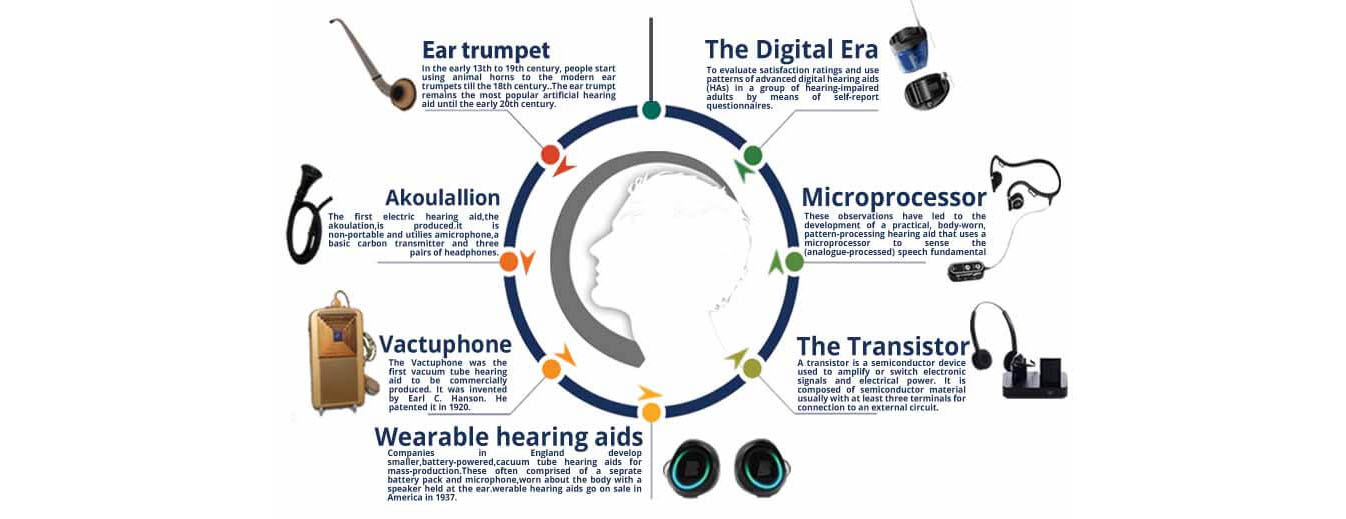
Hearing aid devices that consist of a group of tiny components worn on one or both ears to improve hearing by making sounds louder and speech easier to understand for people with certain types of hearing loss.
The first hearing aids were simple cone-shaped devices, ranging from a rolled-up tube to an elaborate EAR TRUMPET, which provided a small boost in sound. After the invention of the vacuum tube came the first “powered” hearing aids in 1921, but they were cumbersome units with large parts and heavy batteries.
Today, a hearing aid system consists of a tiny microphone that picks up sound waves and converts them into electrical signals. These impulses are fed into an amplifier, which boosts the signal to increase the output of sound and then sends it to a receiver, which converts the amplified signals back into sound and transmits them into the ear through an EARMOLD. They are worn by both deaf and hard-of-hearing people; even profoundly deaf people can benefit from powerful behind-the-ear aids.
People with mild hearing losses may get enough improvement simply with a tiny unit that fits directly into the ear; people with more severe problems may need a larger, more powerful system, usually worn on the body.
Listed below are some of the models of hearing aids that are currently available:

When a person has hearing loss in both ears, the hearing healthcare provider will usually recommend two hearing aids. This is because there are many benefits of hearing with two hearing aids. We'll refer to these benefits as the "binaural advantage".
>> Binaural summation
>> Localization
>> Better hearing in background noise
>> Listening comfort
>> Decreased risk of auditory deprivation
